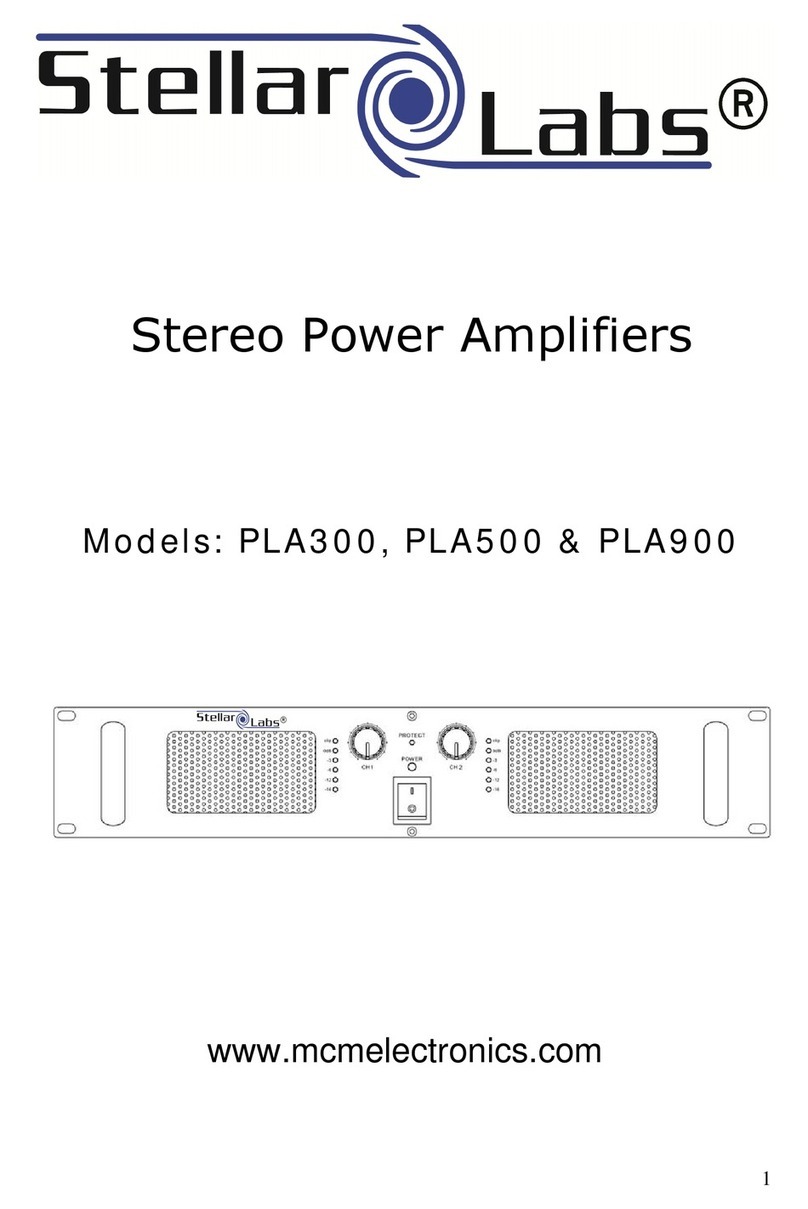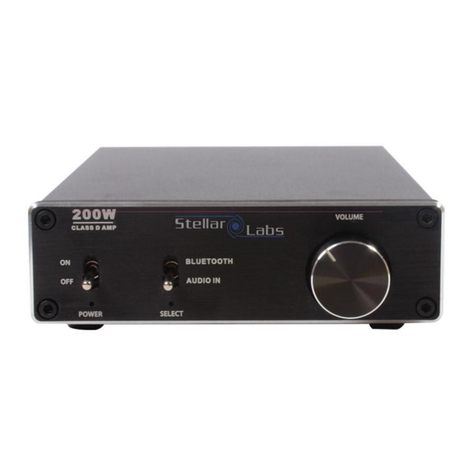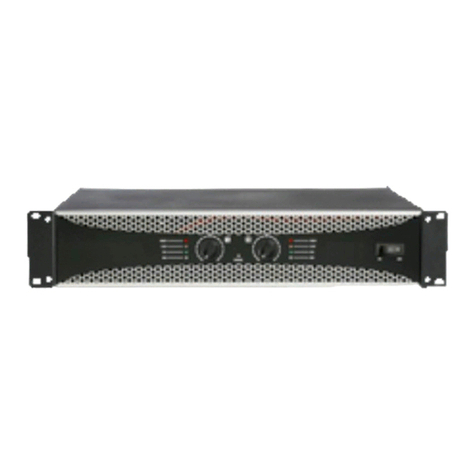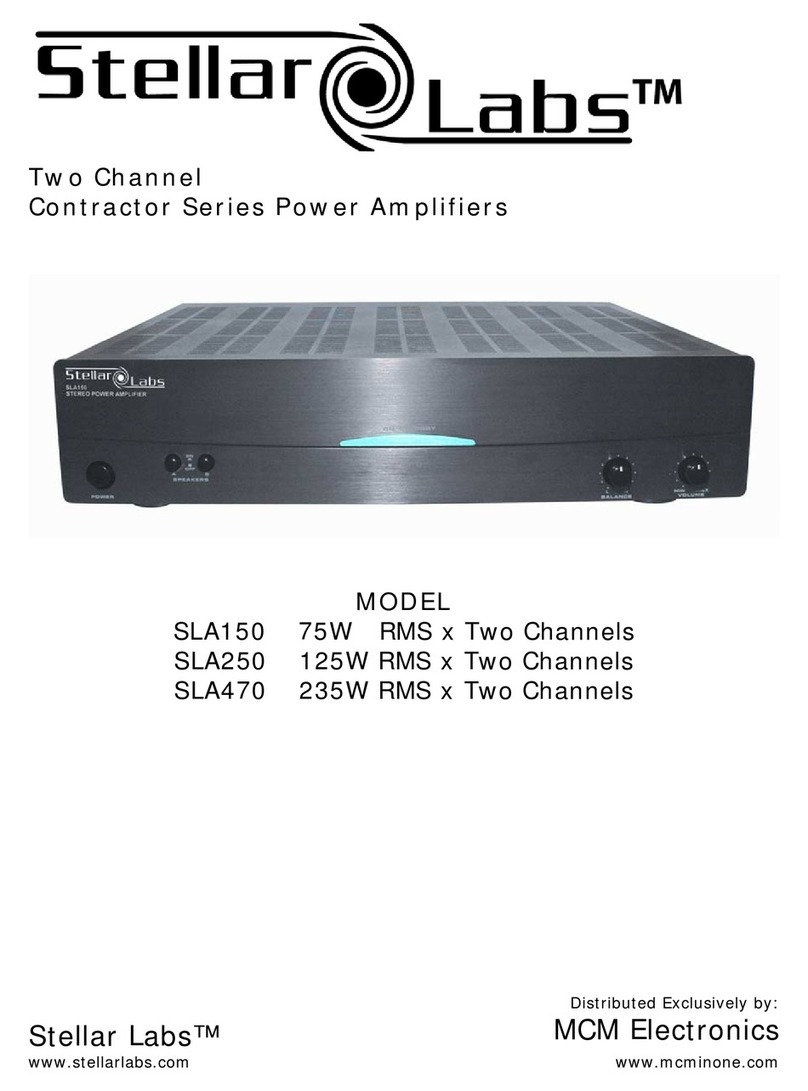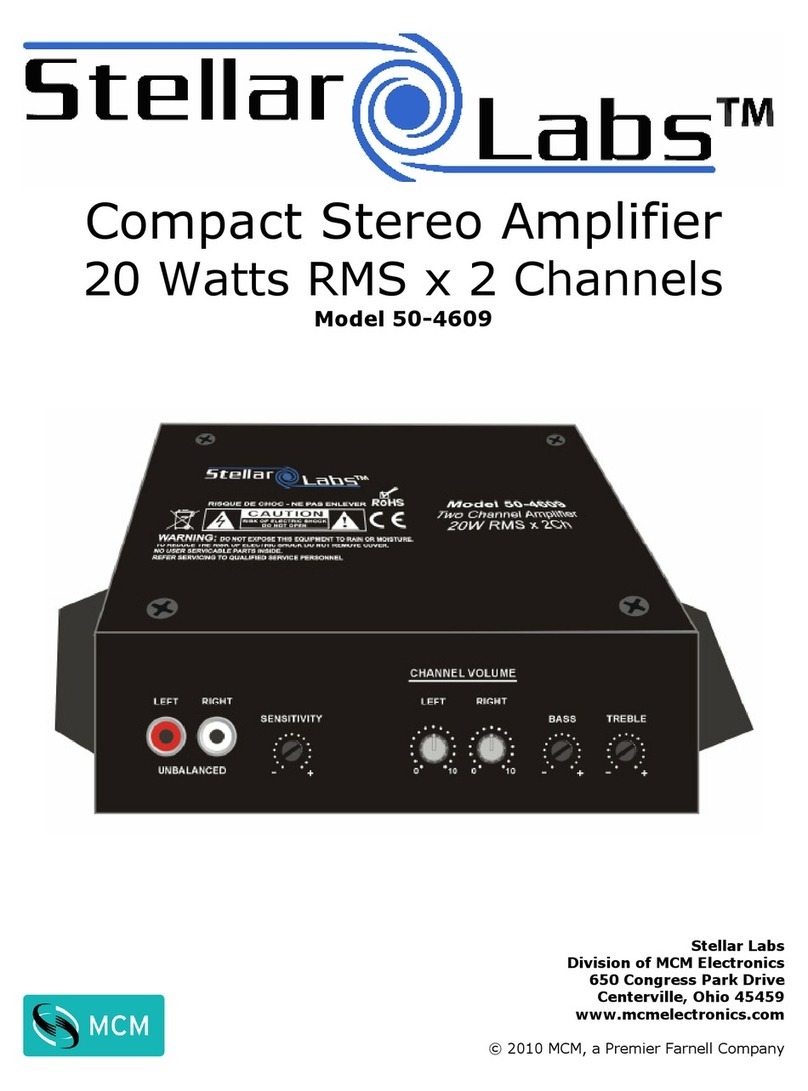CONTENTS
1THANK YOU FOR BUYING STELLAR......................................................................................................7
1.1 RANGE OF OPTIONS ........................................................................................................................7
2CARE OF YOUR AMPLIFIER ....................................................................................................................9
2.1 STORAGE...........................................................................................................................................9
2.2 HANDLING..........................................................................................................................................9
2.3 UNPACKING .......................................................................................................................................9
2.4 CLEANING ..........................................................................................................................................9
2.5 MAINTENANCE ..................................................................................................................................9
3INSTALLATION CONSIDERATIONS ..................................................................................................... 10
3.1 MOUNTING...................................................................................................................................... 10
3.2 RF CONNECTIONS ......................................................................................................................... 11
3.3 COOLING CONSIDERATIONS ....................................................................................................... 11
3.3.1 Some Cooling Facts and Figures ............................................................................................ 11
3.3.2 Ducting Considerations ........................................................................................................... 12
3.3.3 Equipment Housing ................................................................................................................. 12
3.3.4 Commissioning the Installation................................................................................................ 13
3.4 MAINS SUPPLY CONNECTION ..................................................................................................... 13
3.4.1 Mains Supply Cable Connection ............................................................................................. 13
3.4.2 Earthing ................................................................................................................................... 14
3.4.3 Mains Supply Distribution ........................................................................................................ 14
3.5 USER INTERFACE CONNECTIONS .............................................................................................. 14
3.6 REDUNDANT SWITCH CONFIGURATION .................................................................................... 14
4BASIC OPERATION OF THE AMPLIFIER ............................................................................................. 16
4.1 APPLYING THE MAINS VOLTAGE................................................................................................. 16
4.2 MAINS SUPPLY INTERRUPTIONS ................................................................................................ 16
4.3 FUNCTIONS .................................................................................................................................... 16
4.3.1 Amplifier Off State ................................................................................................................... 16
4.3.2 Amplifier Warm-up State ......................................................................................................... 16
4.3.3 Amplifier Standby State ........................................................................................................... 16
4.3.4 Amplifier Transmit State .......................................................................................................... 17
4.4 UP-CONVERTER OPERATION ...................................................................................................... 17
4.5 RF SAMPLE PORT .......................................................................................................................... 17
5USER INTERFACES............................................................................................................................... 18
5.1 PIN IDENTIFICATION...................................................................................................................... 18
5.2 USER INTERFACE FEATURES...................................................................................................... 19
5.2.1 Indicator Outputs – Type 1 ...................................................................................................... 19
5.2.2 Indicator Outputs – Type 2 ...................................................................................................... 20
5.2.3 Analogue Outputs.................................................................................................................... 20
5.2.4 Control Inputs – Type 1 ........................................................................................................... 20
5.2.5 Control Inputs – Type 2 ........................................................................................................... 21
5.2.6 Control Inputs – Type 3 ........................................................................................................... 21
5.2.7 Miscellaneous Functions. ........................................................................................................ 22
6RS-485 SERIAL BUS .............................................................................................................................. 23
6.1 GENERAL DESCRIPTION AND FEATURES ................................................................................. 23
6.1.1 HPA Type? .............................................................................................................................. 23
6.1.2 Status?..................................................................................................................................... 23
6.1.3 General Amplifier Control ........................................................................................................ 25
6.1.4 Redundancy Mode .................................................................................................................. 25
6.1.5 Power Alarms .......................................................................................................................... 25
6.1.6 Warm-up Time?....................................................................................................................... 25
6.1.7 Attenuator Control ................................................................................................................... 25
6.1.8 RF Control ............................................................................................................................... 26
6.1.9 Helix Current Monitoring.......................................................................................................... 26
6.1.10 Elapsed Hours? ....................................................................................................................... 26
6.1.11 Forward Power? ...................................................................................................................... 26
6.1.12 Interface set-up........................................................................................................................ 26
6.1.13 RF band selection.................................................................................................................... 27
6.2 PROTOCOL ..................................................................................................................................... 28
6.2.1 Interface and Termination........................................................................................................ 28
6.2.2 Data Format............................................................................................................................. 28
6.2.3 Data Rate................................................................................................................................. 28
6.2.4 Generalised Message Format ................................................................................................. 28
6.2.5 Command Message Format .................................................................................................... 29
6.2.6 Response Message Format .................................................................................................... 29
© e2v technologies (uk) limited 2010 DAS768892AA Version 1, page 5

